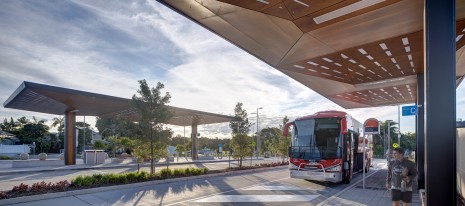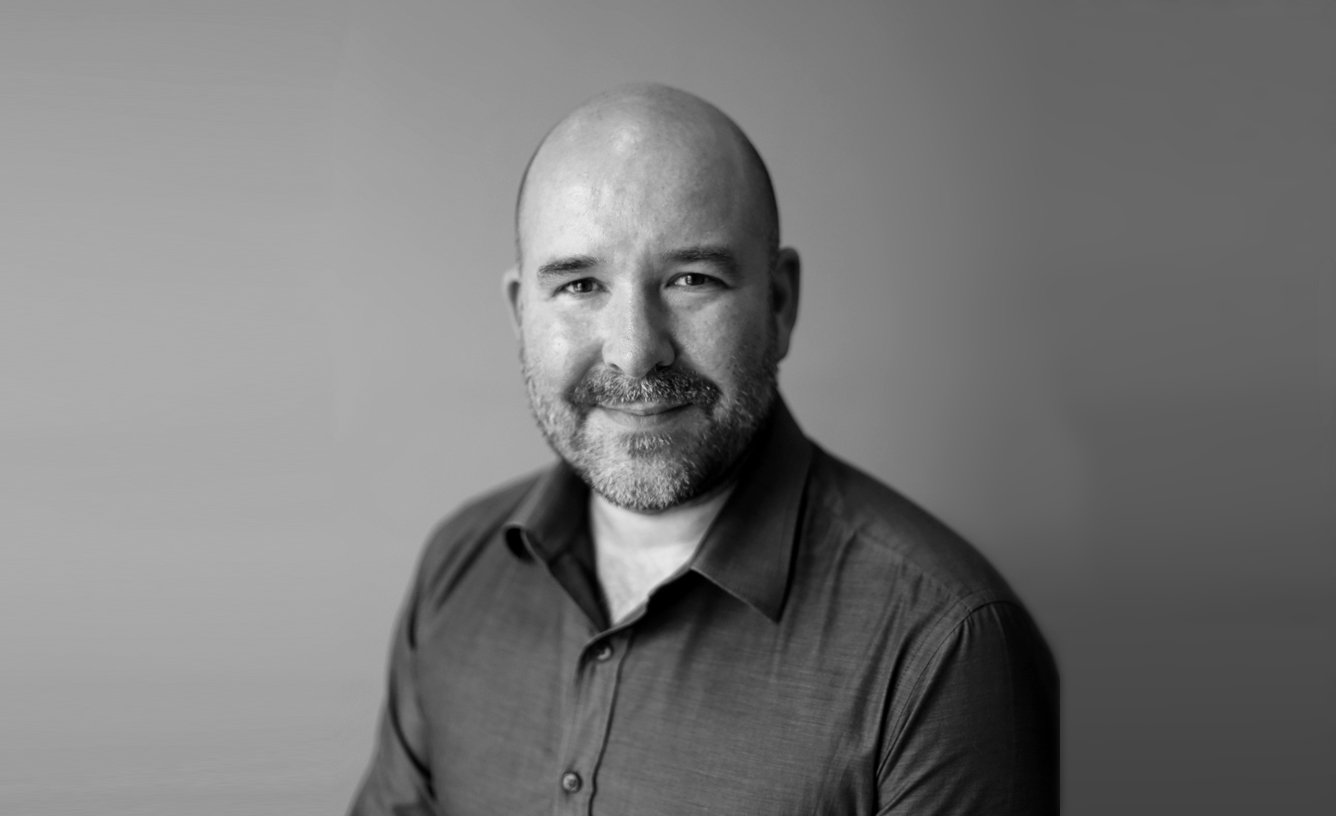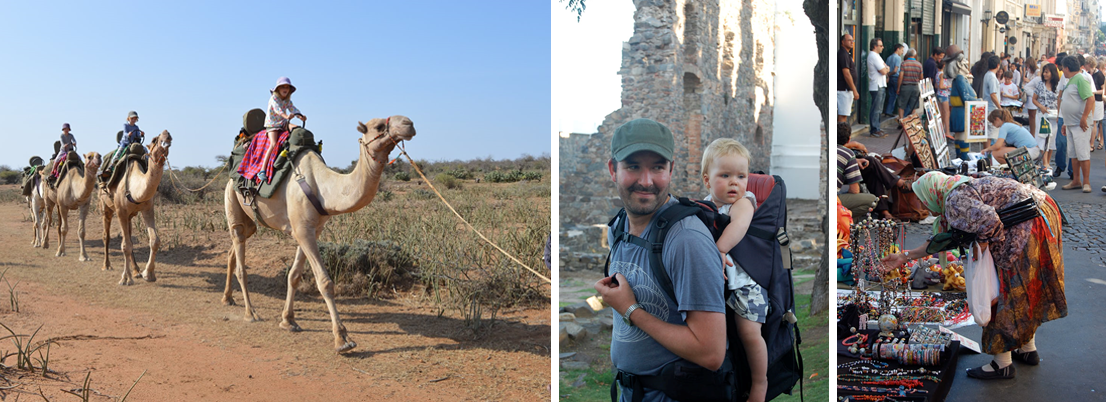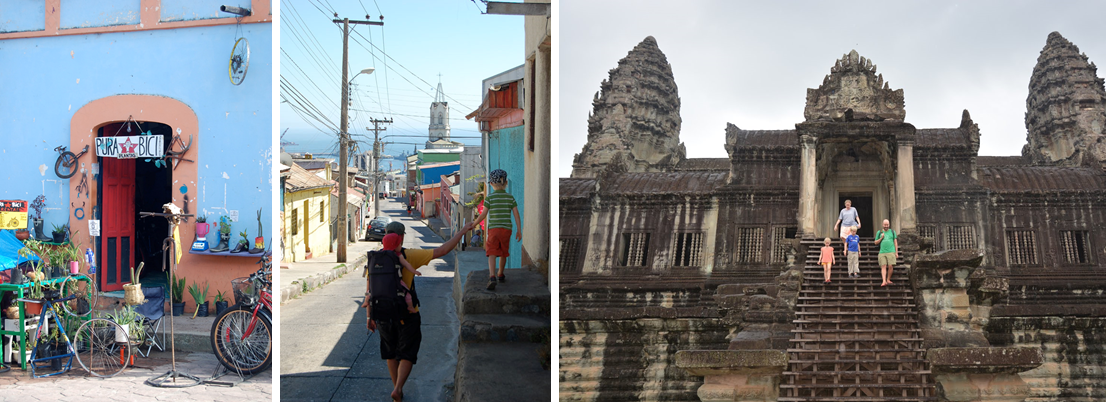
Transport
Better and more connections, in a travel experience that is enjoyable and humanising, is the hallmark of great transport systems.
Paul Wallace is an Architect and Principal at DesignInc. He joined the Sydney office in September 2019, and has been working on big transport and infrastructure projects. We met up with Paul to discuss architecture, design, travel, vinyl and classic cars.

So Paul, tell me about your journey to becoming an architect.
Well, it’s a pretty funny story actually. At the end of school I had no idea what I wanted to do, so I got hold of a list of all tertiary courses available and went through the list, crossing off all of the courses I definitely didn’t want to do. The only thing left on the list was architecture, so that’s what I did! Also, when I really thought about it, it made sense, I realised that it ticked all of my boxes—it was technical, creative, and had the potential to make an impact.
I went to high school in London, but I decided to study part 1 of my qualification [equivalent to the bachelor’s degree in Australia] at a technically-oriented course in Manchester. I intentionally wanted to get a solid footing in the nuts and bolts of design, codes, compliance and construction—a grounding in reality so that I knew I could actually get my designs built. And that was great. I then did part 2 of my qualification [equivalent to the Masters in Australia] at the highly prestigious Architectural Association (AA). I learnt so much there—the standards were incredibly high, and there were famous architects all around—Zaha Hadid was often at tutorials and crits! It was a great place for not only pushing design boundaries but also for building networks.
Zaha Hadid was often at tutorials and crits! It was a great place for not only pushing design boundaries but also for building networks.
Paul Wallace
Principal, DesignInc Sydney
Wow, I had no idea you studied at the AA, that must have been an incredible experience. Tell me a bit about what you did after you graduated.
After I graduated I worked for about 10 years in a couple of smallish architecture practices (Richard Parr and Seth Stein) in London. I worked on high end luxury residences—basically single dwellings for the rich and famous. The houses were across the world—the UK, South Africa, Finland, the Caribbean. Budgets were high and the design challenge was about creating innovative, liveable ‘statement’ homes where money wasn’t really a problem. In one house we specified a Zaha Hadid dining table carved out of a single piece of marble that cost over 100,00 pounds!
I also ran my own small practice for a while working on similar types of residential projects. It was great work, but I was starting to realise I wanted to contribute a bit more of a social impact. At the same time, my wife was self-employed, and we realised our work life balance was out of kilter. We wanted to have kids and see a bit more of the world, so we decided to have a complete change of scenery, and moved to Australia.
When did you and your wife arrive in Australia?
It was in 2006. I initially worked at Scott Carver Architects in Sydney on commercial and multi-unit residential projects. Our first baby was born in 2007, and as we had no family around us, my wife and I both wanted to ‘be around’. I wanted to work four days per week, so I moved to JDH Architects where they offered this flexibility. I worked on education projects, which was such an eye-opener. The budgets were tight, the sites large, the codes complicated, but the value of good design was far-reaching. feedback from students and teachers was amazing—they were blown away, and would come up to us and say ‘wow, I didn’t think it would be this good’. Synthesising the challenges of these projects into a successful design solution that effects so many people was something I hadn’t experienced before.
So after working in the education sector I realised I wanted to work on event bigger projects that impact on more people, where I could make a big change. I went to work with Weston Williamson (a big UK based infrastructure company) on a series of large infrastructure projects, collaborating with large firms such as Hassell and Tzannes. I was there for two years, then just over a year ago I started at DesignInc working on similar large transport and infrastructure projects. I seem to have quite quickly become an expert in this sector, though I still feel quite fresh.
I like being challenged, getting out of my comfort zone. When I am made to think about new projects, that’s when I get excited.
Paul Wallace
Principal, DesignInc Sydney
What do you like about these projects?
I enjoy finding a balance between high quality design and budget constraints. Early in my career I had unlimited budgets, and now I have much smaller budgets for the scope, and I am enjoying the challenge.
I like thinking—coming up with a unique solution that’s appropriate to the context and the brief. I’ve applied these principles to a wide range of contexts and sectors. At the end of the day the process of design is the same for a high-end residential project as for a school—identifying the brief, the parameters, the scope, and coming up with a solution that meets these. I like being challenged, getting out of my comfort zone. When I am made to think about new projects, that’s when I get excited.
So Paul, tell me a bit about life beyond the office.
Well, my wife and I have been together for 20 years, and we have two teenage kids. We are an active, outdoors type family, we love experiences and travel. I also like cooking—it’s how I relax when I get home. And I love music—I have a huge collection of vinyl that is probably closer to 10,000 records than 5,000.
That’s a lot of music!
Yes, and I have a penchant for classic cars. In the UK I had an Audi, and we currently have a Combi campervan. We do lots of weekend and school holiday trips to the countryside near Sydney—bushwalking, exploring—we love experiences that are wet and wild!
We’ve also done a lot of overseas travel as a family, which I’m particularly grateful for in the current situation. When our second child was a baby, and our other son was four, we spent nine months in south and central America. People thought we were crazy, but it was so incredible! I believe humans are essentially good—people want to help you—and having young children with you actually makes people want to help you more! I mean, who is going to do something nasty to you when you have a baby strapped to your back? Our son went to school for two months in Mexico, which has a bad reputation, but really, it was amazing. We travelled to some truly inspirational regions such as Oaxaca and Chiapas, which I would highly recommend.

Before the trip to south America we did a shorter six week ‘test’ trip to japan. We worked out that for us to travel successfully with kids, we needed to set some ground rules. We don’t do much travelling while carrying our luggage—no backpacking. We generally found a base in a place for a few weeks, and lived like it was home, doing small day trips from there. It means we didn’t necessarily tick the boxes of tourist activities and sight-seeing, but we experienced more of what it is like to live in these places.
We also did another trip when the kids were a bit older where we spent five months travelling in Africa and Asia—Kenya, Cambodia, Thailand, Vietnam, Malaysia, Sri Lanka, India. A highlight was staying with some friends who had set up a ‘walking safari’ business (Karisia) in Kenya. We went on one of their camel-led walking through the landscape seeing the incredible ecologies.

I believe humans are essentially good—people want to help you—and having young children with you actually makes people want to help you more! I mean, who is going to do something nasty to you when you have a baby strapped to your back?
Paul Wallace
Principal, DesignInc Sydney
Gee, that sounds dangerous.
Well, it’s not so dangerous if you are with Massai guides who know the landscape!
I guess so! Well, Paul, this has been such an interesting conversation. Do you have any final words?
I would say to finish up that I love all aspects of design—not only architecture, but furniture, graphic design, objects. After my first few months of studying architecture I was struggling—many of the people I was with had a long-standing passion, and knew they wanted to be an architect from an early age. It wasn’t that clear for me, and I felt a bit lost. But I had a tutor who told us to observe everything. Look up, not down at the pavement. Analyse everything—its just as important to work out why you don’t like something as well as why you do like something. This struck me, and has been with me ever since. It informed my mantra:
‘What is it for?’
‘What does it look like?’
‘How is it made?’
I ask these questions of everything. It’s about understanding the use, the aesthetic and the construction / process of something.
Also, with architecture I consider the voids just as important as the solids. the spaces are where humans inhabit.
With architecture I consider the voids just as important as the solids. the spaces are where humans inhabit.
What great words of wisdom! Thank you so much for sharing your story Paul.